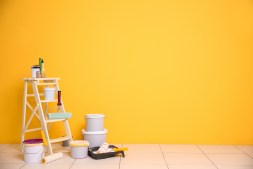The Ultimate Guide to Childproofing Your Home: Tips and Tricks
As a parent or guardian, ensuring the safety of your child is of utmost importance. One way to create a safe environment for your little one is by childproofing your home. Childproofing involves taking precautionary measures to minimize potential hazards and accidents that could harm your child. In this ultimate guide, we will provide you with essential tips and tricks on how to effectively childproof your home.
Childproofing the Kitchen
The kitchen is often filled with potential dangers for curious little ones. From sharp objects to hazardous substances, it’s crucial to take necessary precautions in this area of the house.

Secure Cabinets and Drawers: Install cabinet locks and drawer latches to prevent children from accessing sharp utensils, cleaning supplies, or other potentially harmful items. Opt for locks that are easy for adults to operate but challenging for children.
Stove Safety: Use stove knob covers to prevent children from accidentally turning on burners or ovens. Additionally, consider installing stove guards or safety gates around the cooking area to keep kids away from hot surfaces.
Lock Up Chemicals: Store cleaning products such as detergents, bleach, and dishwashing liquids in locked cabinets or high shelves out of reach of young children.
Creating a Safe Living Room
The living room is where families spend quality time together, but it can also pose various risks for children if not properly childproofed.
Anchor Furniture: Heavy furniture items like bookshelves and TV stands should be securely anchored to the wall to prevent tipping over when climbed on by curious kids.
Cover Electrical Outlets: Use outlet covers or plug protectors on all accessible electrical outlets throughout your home, including those in the living room.
Secure Cords and Wires: Keep cords and wires out of reach by using cord covers or hiding them behind furniture. This will prevent children from pulling on them and potentially causing accidents.
Childproofing the Bathroom
The bathroom can be a hazardous area for young children due to slippery surfaces, hot water, and various toiletries.
Toilet Safety: Consider installing a toilet lock or latch to prevent children from opening the toilet lid and potentially falling in or playing with harmful cleaning products.
Temperature Control: Adjust your water heater’s temperature to ensure that the maximum setting is safe for children. This will help prevent scalding accidents during bath time.
Store Medications Securely: Keep all medications, including prescription drugs and over-the-counter medicines, locked away in a cabinet out of your child’s reach.
General Safety Measures
In addition to specific areas of your home, there are general safety measures you can take to further childproof your living space.
Install Safety Gates: Use safety gates at the top and bottom of staircases or in areas where you want to restrict access for your child’s safety.
Window Safety: Install window guards or window stops to prevent accidental falls. Keep windows locked when they are not in use and ensure blind cords are tied up high and out of reach.
Eliminate Small Choking Hazards: Regularly scan your home for small objects that could pose a choking hazard, such as coins, buttons, or small toys. Keep these items out of reach or stored safely away from children.
By implementing these childproofing tips and tricks throughout your home, you can create a safer environment for your little ones to explore and grow without unnecessary risks. Remember that childproofing is an ongoing process, so regularly reassess potential hazards as your child grows older and gains new abilities.
This text was generated using a large language model, and select text has been reviewed and moderated for purposes such as readability.


